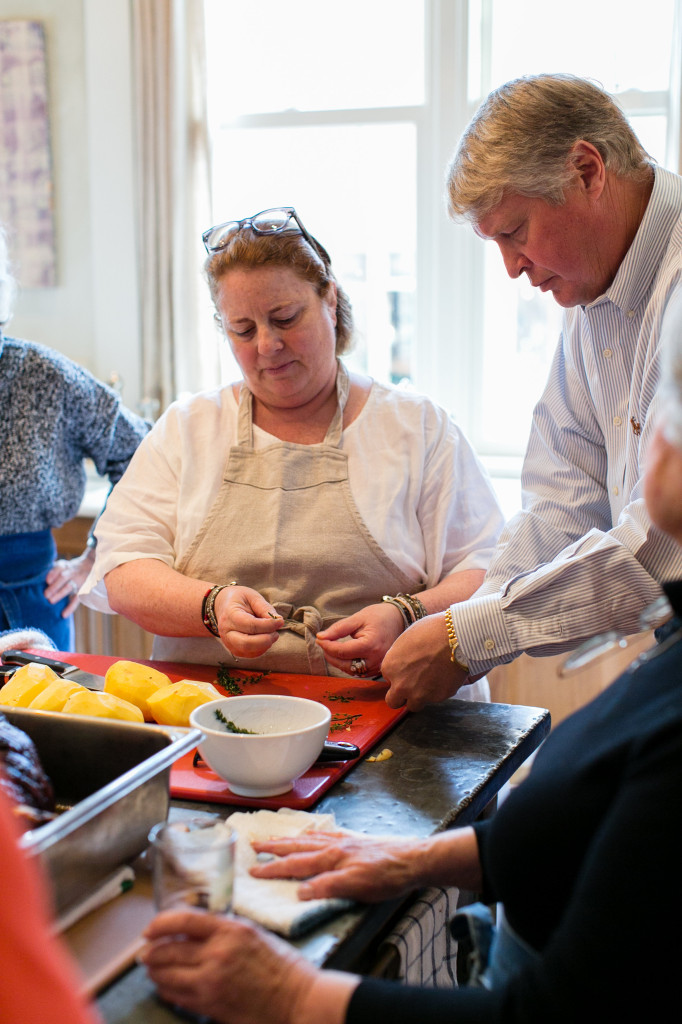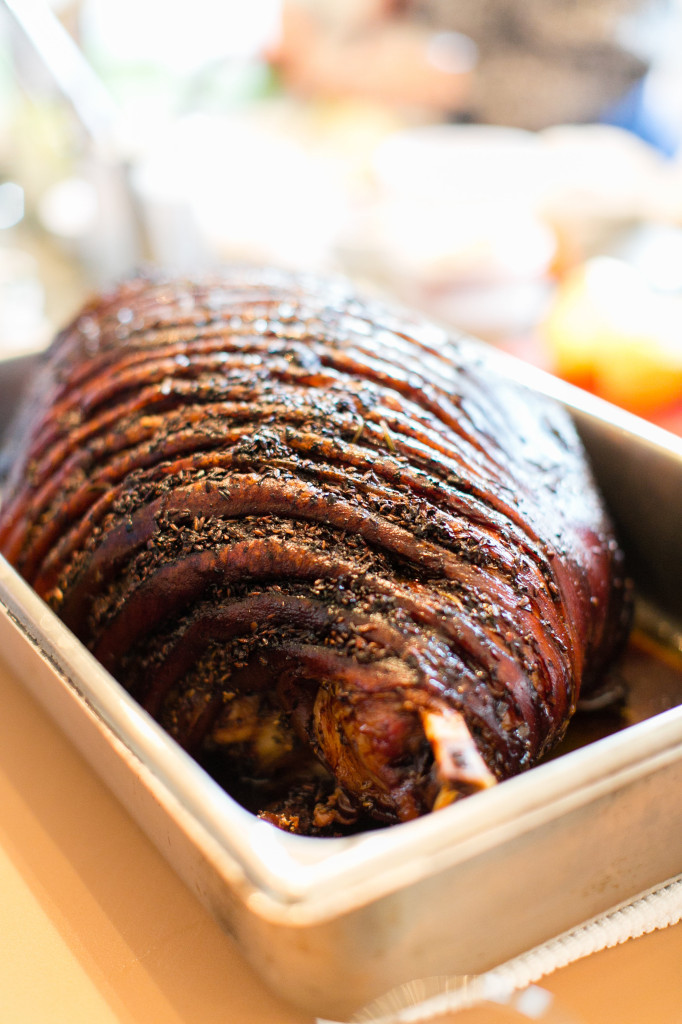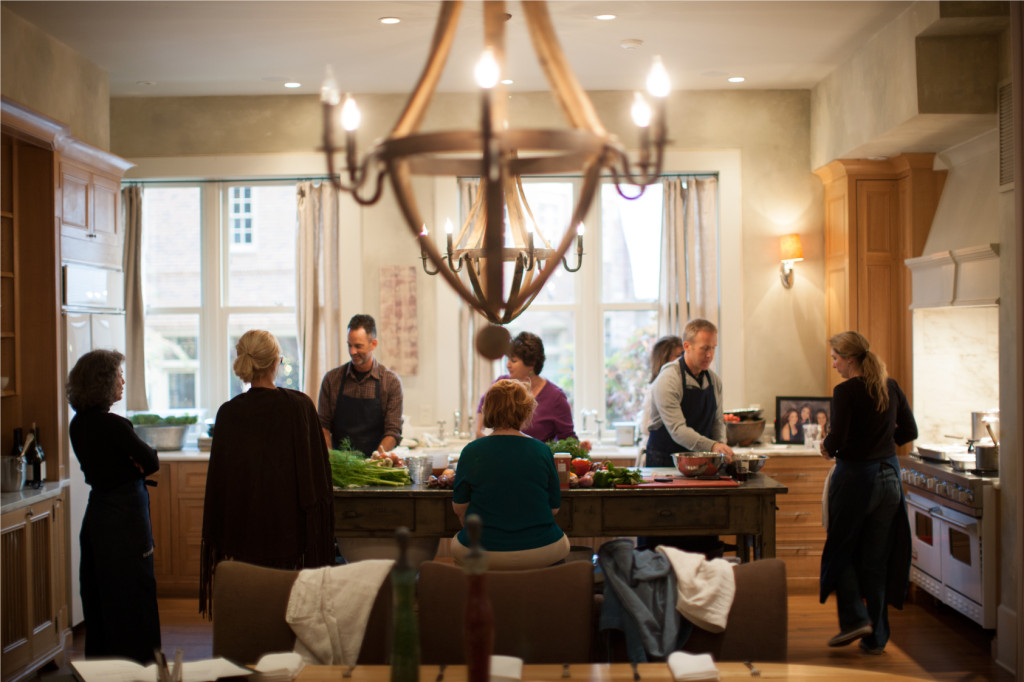
I met Anne Quatrano, chef/owner of Bacchanalia, Floataway Café and Abattoir, more than 10 years ago at one of the first Les Dames d’Escoffier events. I’d seen her in her restaurants and had admired her from afar for years. Anne didn’t bring fine dining to Atlanta, but she took it to another level.
In 2009, when I asked her to be one of the chefs in my first Southern Chefs Series, I was still in absolute reverence. But after spending two days together, I was in awe for a completely different reason. Anne’s attention to detail is over the top. It’s not obsessive-compulsive or tedious—she just has an eye for exquisiteness. She also has a very wicked, very dry sense of humor. It only comes out occasionally and I feel graced when I get to see it.
After that first class, as she walked out the door, I said, “You know you’re coming back, right?” And she replied, “Yes Marie, I’ll always be back.”
For her class last month, Anne showed up with a copy of her new cookbook, Summerland, for each participant. She also had bookmarks made that represented each recipe—a lobster, pig, vegetable bouquet, etc.—so everyone could find each dish with ease. That’s Anne—I have yet to meet a chef that goes to the nth degree like her. And of all the chefs who’ve visited for the Southern Chefs Series over the years, she’s the one I’ve gotten to know the best.
Anne stopped by Star Provisions, her retail space and market on Atlanta’s Westside, and picked up freshly baked brioche, which she fried in butter for lobster rolls. We made Mexican wedding cookies. And we made her porchetta, a slow-roasted leg of pork that is everyone’s favorite staff meal at Bacchanalia.

Slow-Roasted Porchetta
Serves 12, with leftovers
9 cups kosher salt for brining, plus 1 tablespoon for the spice mixture
1 (15 pound) whole leg of pork, bone-in, skin-on
1 cup fennel seeds
2 tablespoons crushed red pepper flakes
8 garlic cloves
2 cups freshly squeezed lemon juice (about 10 lemons)
2 cups spicy olive oil, such as Arbequina
One week prior to cooking, brine the pork. You can ask your butcher to brine the leg for you, or do it yourself: Dissolve three cups salt in 2 gallons cold water in a five-gallon bucket. After the salt is dissolved, add ice to bring the water up to the three-gallon mark to ensure that the brine is very cold. Place the whole leg in the brine and refrigerate for up to a week. (If refrigerator space is a consideration, a sturdy five-gallon bag, sealed tightly, would also work.) I like to change the brine every couple of days, using up to 9 cups of salt.
The night before serving the pork, preheat the oven to 450 degrees F. Remove the leg from the brine and allow it to air dry, or pat dry with paper towels. With a sharp paring knife, make parallel incisions about 1 inch apart the length of the pork through the skin and fat of the leg, almost to the meat. Repeat, covering the entire skin of the leg with the incisions.
Lightly toast the fennel seeds in a dry large nonstick pan over medium heat until just fragrant; let cool. In a food processor, pulse the cooled fennel seeds, red pepper flakes, garlic and the 1 tablespoons salt until roughly chopped. Generously press the spice mixture into the incisions in the leg.
Place the leg of pork in a roasting pan and roast for 45 minutes. The pork should be deep golden brown in color and very aromatic. Mix the lemon juice with the oil and pour over the browned pork leg. Turn the oven down to 225 degrees F and continue to roast for about 12 hours. Baste with the pan juices every few hours, if you like, or just leave it to cook. In the morning I will baste a few times. Check the pork frequently after 11 hours; the meat should fall off the bone and the skin should be a deep golden brown.
To serve, remove the cracking skin and then pull the meat with a form into long pieces. Drizzle the pork with the remaining pan juices, or serve the jus on the side. Serve the cracking skin, cracking it into pieces, if you wish, as a garnish with the pork (some think it’s the best part).








